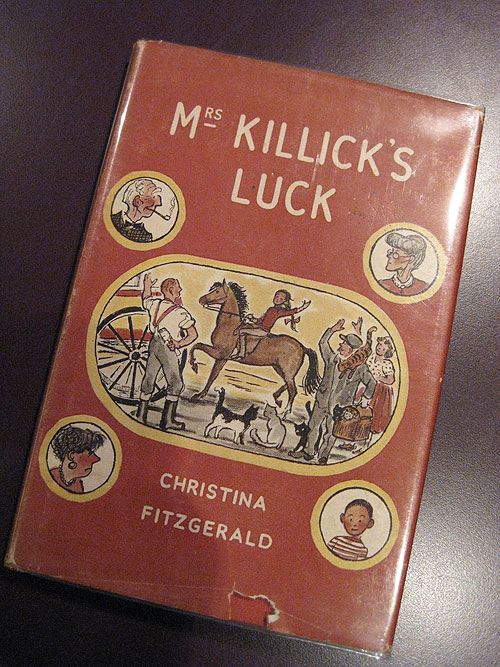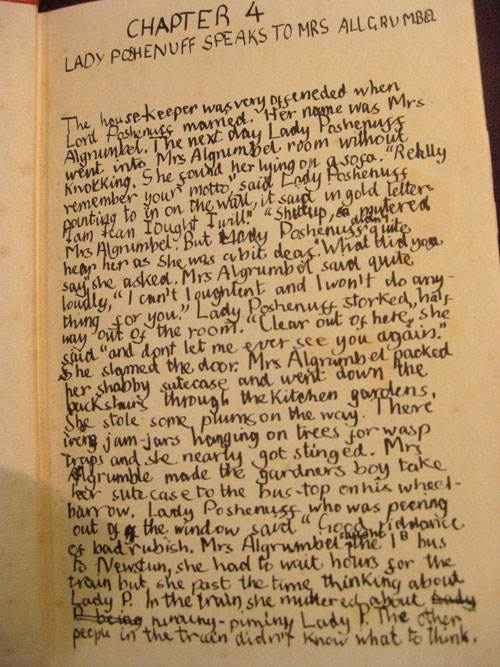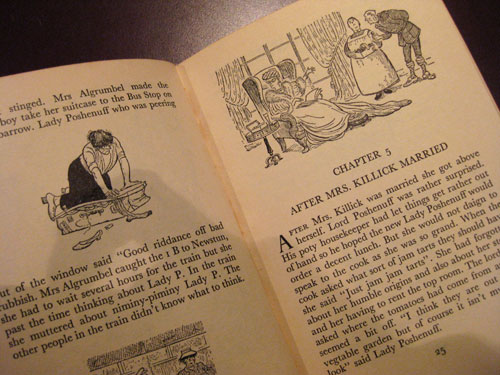In the past week or so, I’ve had a mounting sense that this might finally be the year that Penelope Fitzgerald gets the widespread attention that never really shone on her in her lifetime. This detailed appreciation (with its slightly bewildering for longtime devotees, but still tantalizing news of a screenplay in the works) appeared in the Los Angeles Review of Books, in the same week that Australian author Peter Carey revealed in his appearance at the Toronto Public Library that he was only now discovering the delights of his fellow Booker Prize winner’s slim, brilliant oeuvre. So, this is the time to celebrate this rare and quirky piece of the captivating Fitzgerald puzzle.
Those who are devoted fans of Penelope Fitzgerald’s work, or are becoming fans thanks to Hermione Lee’s definitive biography and the deserved accolades it is reaping, will appreciate that this is a very special book and a charmingly beautiful book object in its own right. To be clear, though, it is not a work of Fitzgerald herself, but of her eldest daughter Christina (Tina) Fitzgerald.
After winning a short story competition sponsored by the UK’s Sunday Express in 1960, nine-year-old Tina was given the opportunity to expand her precocious tale to book length. (The finished work is 80 pages, extensively and delightfully illustrated.) Novelist and poet Stevie Smith, who contributed to Penelope and Desmond’s World Review magazine, contributes an astute foreword. The lively illustrations are supplied by Mary Shepard, original illustrator of the Mary Poppins books and daughter of EH Shepard, who illustrated Winnie the Pooh and The Wind in the Willows. In other words, this wee book comes crammed with extensive literary pedigree.

Celebrations of Penelope Fitzgerald’s work often have a wistful tinge to them, as the start of her literary career at the age of 58 (with the publication of a biography of artist Edward Burne-Jones) is considered almost heart-wrenchingly belated. In a nutshell, she contended – with aplomb, but setting aside aspirations – with personal and professional pitfalls and with keeping her family together and cared for as best she could. It’s all rather tragicomically symbolized by the real-life sinking of the family houseboat, which became part of the fictionalized setting of her Booker-winning novel Offshore. So, a wistful irony about Mrs Killick’s Luck is that Tina became a published author before her mother.
Hermione Lee suggests in her biography that Penelope quietly harboured her own unique flavour of ambitious and competitive spirit – later in life, Penelope even cheated at games with her grandchildren. Would, then, the opportunity for her daughter to publish a novel when she so desired to do so herself have been perhaps bittersweet? As Stevie Smith observes in her foreword:
“So altogether I think this is a very good story, with such sharp eyes at work and sharp wits like little white teeth.”
Like mother, like daughter?
The book includes a page from the young author’s original manuscript:

In another recent “beautiful book object” post, I really loved seeing a sample of the author’s typescript. Seeing that gives you such a tangible sense of the person behind the book, doesn’t it?
Here are some of Mary Shepard’s rich and perky illustrations:

Isn’t this a treasure?

Pingback: Mrs Killick’s Luck – Parrots Ate Them All
Thanks so much for posting this. I’m currently reading the Hermione Lee biography and was intrigued when Tina’s book was mentioned. I did some searching and landed here. The page from the original author’s manuscript is wonderful!
I’m so glad you found your way here and dropped me a note. Isn’t the Hermione Lee biography splendid? I think Lee is a dazzling chronicler, and she does such an admirable job on fascinating Penelope Fitzgerald. Mrs Killick’s Luck is a charmer of a wee book, and such an intriguing artifact of Penelope, Tina and their family.
Pingback: 2015 reading list (so far) | bookgaga
Hello again! I finished the biography. Brilliant! Only wish I could have met Penelope. What a fascinating, inspiring life. I requested the book for Christmas, having never even read any of her work, because I was interested in the story and how she came to publish at age 58. I have started The Bookshop and just love it. Her descriptive language is so vivid. Are you in the UK? I think I remember hearing of The Blue Flower when it came out here in the USA, but none of her others. Looking forward to reading them all!
Hi again, Jane. So glad to hear you enjoyed the Fitzgerald biography. She’s a fascinating and inspiring subject indeed – and Hermione Lee is an exquisite biographer. (I really admire Lee’s Edith Wharton biography, too.) The Bookshop was my first introduction to Penelope Fitzgerald, and then my husband and I tracked down the rest of her books, mostly through UK booksellers. (We’re in Toronto, Canada.) Enjoy discovering all her works!
I am reading Penelope Fitzgerald: A Life, and I find myself stopping as I go and looking up the people and books referred to in the text. Thank you for sharing pictures of Tina’s book. I would love to find a copy of it! I have ordered Jennifer Lash’s, On Pilgrimage, after looking up this author mentioned in the book as well. This was her memoir, a genre I’m very interested in currently. I enjoyed your post!
Jane, thank you so much for your kind note – I’m glad you enjoyed the post. I’m also thrilled to find another Penelope Fitzgerald fan out there, and to know that you’re having a splendid journey through her life and work.